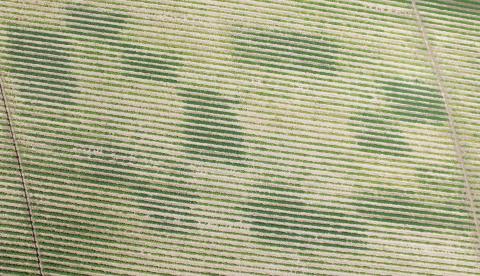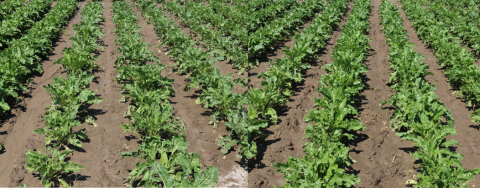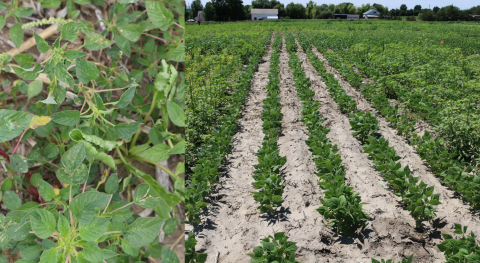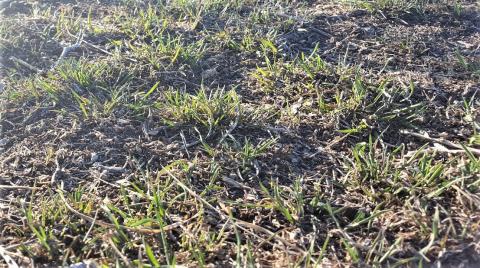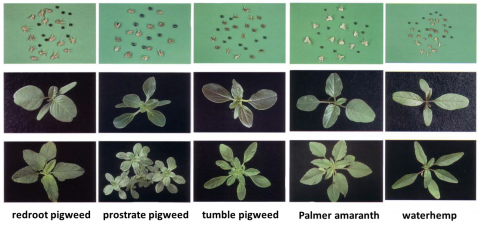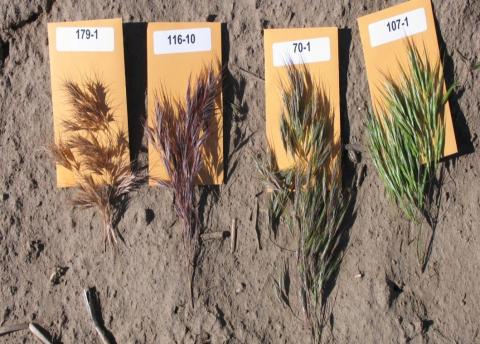Coal Combustion Residue: A Potential Soil Amendment
February 22, 2018
大学of Nebraska researchers applied char, a by-product of sugar beet processing, at three sites to study its effect on soil properties.
When To Replant Sugarbeets: The Relationship Between Population, Yield, And Replant Timing
January 8, 2018
An article from the Proceedings of the 2018 Nebraska Extension Crop Production Clinics: Early season stand loss from wind or frost can be severe enough to require replanting of a sugarbeet crop. Three years of field trials at the Panhandle Research and Extension Center were conducted to determine just how much stands need to be reduced to justify replanting.
Herbicide-Resistant Kochia, Palmer, and Waterhemp in the Panhandle: Distribution and Management
January 8, 2018
Several field trials were undertaken in 2017 to look at options for controlling herbicide-resistant kochia, Palmer amaranth, and waterhemp in dry bean, corn, and sugarbeet. In addition over 80 kochia, Palmer amaranth, and waterhemp plants were collected for testing of herbicide resistance. Of these 50% of kochia and 13% of Palmer amaranth plants tested were resistant to field rates of glyphosate. While options are limited in the Panhandle, pairing crop rotations with herbicide programs using PRE and layby treatments provided effective control of key weed species. An article from the Proceedings of the 2018 Nebraska Extension Crop Production Clinics.
Take Advantage of Warm Weather this Winter to Control Downy Brome
February 20, 2017
Just a month after double-digit below zero temperatures, Nebraska hit an extended period of above normal temperatures, coaxing weed seeds to germinate early in many fields and pastures and creating the need to tackle the influx early.
Management of ALS-Resistant Palmer Amaranth and Waterhemp in the Panhandle
January 6, 2017
Palmer amaranth and waterhemp in the Panhandle are resistant to ALS-inhibiting herbicides. While control of these weeds in dry bean can be challenging, corn, irrigated small grains, and sugarbeet make good rotation options for control. A combined pre/post treatment strategy controls weeds in the early part of the season when crop yield is most impacted and weed species are most susceptible to control inputs.
Managing Glyphosate- and ALS-Resistant Kochia in the Panhandle
December 15, 2016
The development and management of pesticide-resistant kochia in dryland and irrigated systems in the Panhandle including a table of herbicide options for Nebraska.
Nebraska Extension Pest of the Month: Cheatgrass
October 17, 2016
The winter annual weed species cheatgrass is competitive with crops, desirable forage, and native plants and will reduce productivity of crop and range land. Learn how grazing, mowing, and properly timed herbicide application can be integrated to provide effective control.
Fall Weed Control Options for Winter Wheat
August 31, 2016
Weed management is a long-term battle that needs to continue even in tight margin years.Although herbicide costs may seem prohibitive, it’s important to consider the long-term implications of limiting or eliminating the use of herbicides in crop production systems.Weeds left unmanaged after wheat harvest use valuable nutrients and water needed for the following year’s crop while producing seeds to replenish the soil seed bank.


